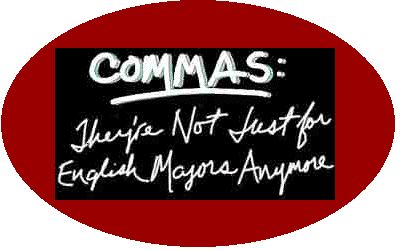
|
commas with... |
|
Introductory Elements
|
According to St.
Martin's Handbook, failure to use commas with introductory elements
is the number one sentence-level error students make.
Q. What is an introductory element?
A. In general, an intro element
gives, at the beginning of the sentence, information that prepares or orients
the reader for a sentence's independent clause.
- An intro element
can be a dependent or subordinate clause:
Before she went insane, she taught English composition
at Emory.
- An introductory
element can also be a transition word, like however or therefore:
Therefore, she
never was truly sane.
Hint: Always identify the
independent clause!
- Notice that
in both cases the comma comes just before the independent clause. In
general, you'll really help yourself with commas and all kinds of punctuation
if you first find the independent clause.
Watch out, though - the length
of a clause can fool you into thinking it's a complete sentence. Read this
sentence and locate the independent clause:
Even
though we all had an incredible time before the concert started and most of
the people I knew were there waiting for me to sing a song I wrote last year, I left.
Notice the comma after "year"
-- does it belong there?
Remember, we want to justify the comma. So let's ask ourselves: what's
the independent clause?
Even
though we all had an incredible time before the concert started and most of
the people I knew were there waiting for me to sing a song I wrote last year,
I left.
Everything leading up to it is an introductory element.
Therefore, the comma is correct.
|
|
|
|
|
|
|
|
|
IE: Introductory Elements
|
|
|
2IC: Two Independent Clauses
|
|
|
CA: Compound or Coordinate Adjectives
|
NRE: Non-Restrictive Elements
|
|
|
|
|
|
|
|
|
|
|
|
|
|
|
|